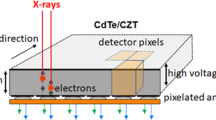Abstract.
The guidelines for publishing economic evaluations require a statement of the economic importance of the analysis and the viewpoint from which it has been carried out, as well as specification of at least two alternative programmes or interventions, the form of economic evaluation, the outcome measure, the method of costing, the time horizon and adjustment for timing of costs and benefits (e.g. by a discount factor), and the allowance for uncertainties (e.g. by implementation of a sensitivity analysis). The decision analysis can be based on clinical trial data, on retrospective or administrative databases, or on modelling. The choice of outcome measures is the key issue in an economic evaluation. In cost-effectiveness analysis, benefits are usually measured in natural units. This is the form of economic evaluation most frequently used in nuclear medicine. Endpoints of effectiveness applied in studies in this field have been procedures avoided, procedures initiated, cardiac events, survival probability, morbidity, quality of life and protracted or failed surgical procedures. In other instances, surrogate endpoints have been used such as metastases detected, staging, viability or tumour response. This, however, limits comparability of cost-effectiveness considerably, as proof of a change in the health outcome cannot be obtained. Measures of utility such as QALYs (quality-adjusted life years) have so far only been applied for decision tree analysis. Useful examples of economic evaluation studies in nuclear medicine are presented here for fluorodeoxyglucose positron emission tomography (FDG-PET) in the preoperative staging of non-small cell lung cancer, for FDG-PET in differentiating indeterminate solitary pulmonary nodules, for somatostatin receptor scintigraphy in detecting metastases of carcinoid tumours, for routine preoperative scintigraphy with sestamibi in patients with parathyroid adenoma, for periodic measurement of thyroid-stimulating hormone in detecting mild thyroid failure, for diagnostic algorithms including a lung scan in patients with suspected pulmonary embolism, for myocardial perfusion imaging as an incremental prognostic factor in patients with coronary artery disease, and for the use of radioiodine as first-line therapy of Graves’ hyperthyroidism and of toxic nodular goitres. Further evaluations of effectiveness or utility should be carried out within a multidisciplinary framework to ensure that nuclear medical procedures are included in the general management guidelines.
Similar content being viewed by others
Author information
Authors and Affiliations
Rights and permissions
About this article
Cite this article
Dietlein, M., Knapp, W., Lauterbach, K. et al. Economic evaluation studies in nuclear medicine: the need for standardization. Eur J Nucl Med 26, 663–680 (1999). https://doi.org/10.1007/s002590050436
Issue Date:
DOI: https://doi.org/10.1007/s002590050436




